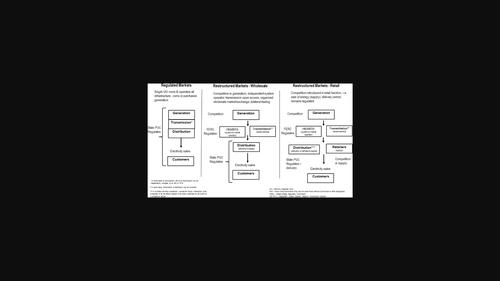脱碳转型与美国电力市场:影响与创新
IF 5.4
3区 工程技术
Q2 ENERGY & FUELS
引用次数: 1
摘要
近年来,美国的几个因素共同推动了对电力行业脱碳的集中努力。首先,为了应对气候变化的威胁,各级政府的政策越来越多地促进和激励零碳解决方案的部署,特别是可变可再生能源(VRE),如公用事业规模的风能和太阳能光伏发电,以及分布式能源(DERs),如屋顶太阳能光伏发电和电池储能系统。其次,这些技术的成本已经下降,导致其市场渗透率大幅增加。最后,随着越来越多的人能够获得更便宜、更清洁的技术解决方案,消费者在能源选择方面变得更加积极主动,这既是降低能源成本的一种方式,也是对环境更负责任的一种方式。这些去碳化的动态正在影响电力市场——那些已经引入竞争的市场(重组市场),以及那些垂直整合的公用事业保持垄断的市场(监管市场)。例如,VRE的日益普及影响了批发市场价格,许多有组织的批发市场已采取措施,在其市场运作中增加更大的灵活性,以容纳更多的VRE。在受监管的市场中,许多州的政策制定者和监管机构正在评估现有监管框架的各种变化,以适应更多的der。本文概述了更多的VREs和der对每个市场结构的影响,并描述了每个市场为适应这些脱碳趋势而进行的关键调整和变化。本文章由计算机程序翻译,如有差异,请以英文原文为准。

The decarbonization transition and U.S. electricity markets: Impacts and innovations
Several factors in recent years have converged in the U.S. to spur a focused effort on decarbonizing the electricity sector. First, in response to the threat of climate change, policy at all levels of governance is increasingly promoting and incentivizing the deployment of zero carbon solutions, especially variable renewable energy (VRE) sources such as utility‐scale wind and solar PV, as well as distributed energy resources (DERs) such as rooftop solar PV and battery energy storage systems. Second, the costs of these technologies have declined to result in major increases in their market penetration. Finally, in response to greater access to cheaper, clean technology solutions, customers have become more engaged and proactive in their energy choices, both as a way to lower energy costs and to be more environmentally responsible. These de‐carbonization dynamics are impacting electricity markets—those where competition has been introduced (restructured markets), as well as those where vertically integrated utilities maintain a monopoly (regulated markets). For example, increasing penetration of VRE has influenced wholesale market prices, and many of the organized wholesale markets have implemented initiatives to add greater flexibility in their market operations to accommodate larger amounts of VRE. In regulated markets, policy makers and regulators in many states are assessing a variety of changes in the existing regulatory framework to adapt to more DERs. This overview identifies the impacts of more VREs and DERs on each market structure, and describes key adaptations and changes in each market to accommodate these de‐carbonization trends.
求助全文
通过发布文献求助,成功后即可免费获取论文全文。
去求助
来源期刊

Wiley Interdisciplinary Reviews-Energy and Environment
ENERGY & FUELS-
CiteScore
11.70
自引率
3.30%
发文量
42
期刊介绍:
Wiley Interdisciplinary Reviews: Energy and Environmentis a new type of review journal covering all aspects of energy technology, security and environmental impact.
Energy is one of the most critical resources for the welfare and prosperity of society. It also causes adverse environmental and societal effects, notably climate change which is the severest global problem in the modern age. Finding satisfactory solutions to the challenges ahead will need a linking of energy technology innovations, security, energy poverty, and environmental and climate impacts. The broad scope of energy issues demands collaboration between different disciplines of science and technology, and strong interaction between engineering, physical and life scientists, economists, sociologists and policy-makers.
 求助内容:
求助内容: 应助结果提醒方式:
应助结果提醒方式:


